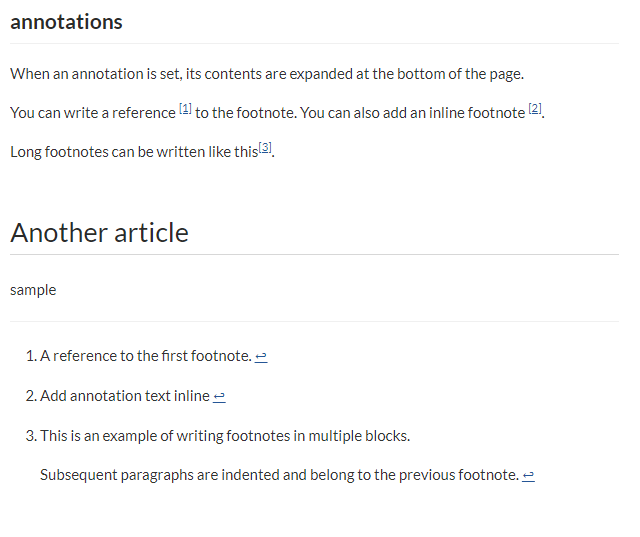# Add footnotes
You can add annotations and footnotes to your GROWI wiki. When you add an annotation, a footnote appears at the bottom of the page.
# How to write annotations and footnotes
- Using references
- You can add a footer reference to a footnote using the notation
[^#], where#is the footnote number, e.g.[^1],[^2], etc. You can add a footnote reference anywhere in the document you want. - The corresponding footnote should be annotated using
[^#]:, the same text but with a colon at the end.
- You can add a footer reference to a footnote using the notation
- Block syntax
- You can write the annotation reference using plain English as well.
- For example, you could use an annotation like
[^longnote]; the footnote would be annotated[^longnote]:(with a colon).
Both the reference [^1] and the annotation [^1]: must exist.
If either one is not present, the other will not function as an annotation.
# Writing long footnotes with paragraphs
If you would like to add a line break into your footnote, you can continue your footnote after the line break by adding an indentation to the beginning of the following paragraph.
# Example
## annotations
When an annotation is set, its contents are expanded at the bottom of the page.
You can write a reference [^1] to the footnote.
Long footnotes can be written like this[^longnote].
[^1]: A reference to the first footnote.
[^longnote]: This is an example of writing footnotes in multiple blocks.
Subsequent paragraphs are indented and belong to the previous footnote.
# Another article
sample
When you create a GROWI page with the above Markdown text, the page created will look like the image below.
